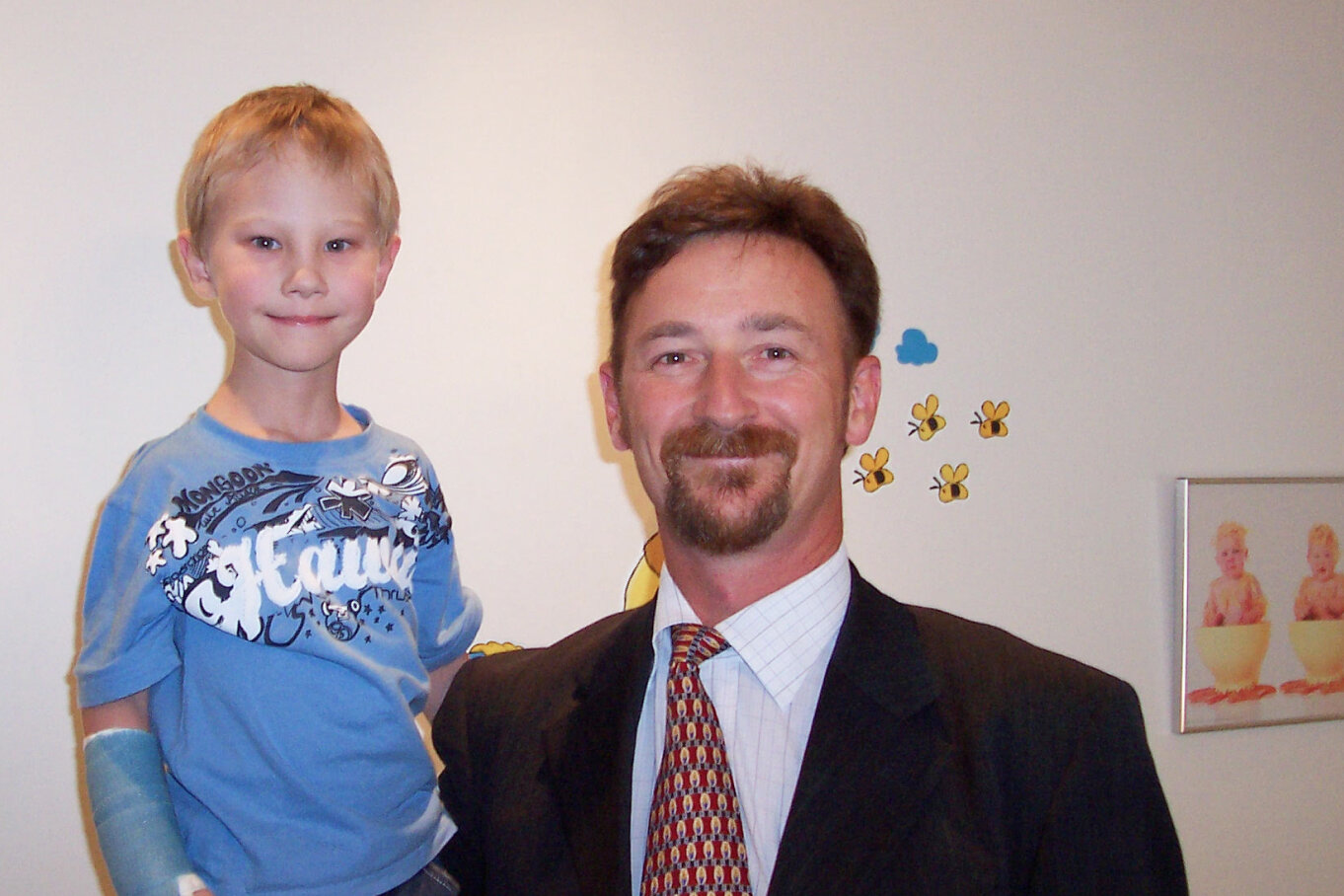Dr Guy Henry is a specialist Paediatric Surgeon

Dr Guy Henry is a specialist Paediatric Surgeon

Dr Guy Henry is a specialist Paediatric Surgeon. Raised in Sydney, he is a 3rd generation surgeon who has been practicing for over 25 years. His surgical interests include all general paediatric surgery (including circumcision), hypospadias, minimally invasive (keyhole) surgery for both the abdomen and chest, gastroesophageal reflux surgery, oncological surgery and antenatal consultations for foetal malformations.
Dr Henry did his undergraduate degree at the University of NSW and trained at a number of hospitals including Prince of Wales Hospital, Royal Alexandria Hospital for Children Camperdown, New Children's Hospital Westmead and Sydney Children's Hospital Randwick. He obtained his general (adult) surgical fellowship in 1994. He undertook a Paediatric Trauma Fellowship at Children's National Medical Center, Washington DC and obtained his Paediatric Surgical Fellowship in 1997.
Dr Henry is a Fellow of the Royal Australasian College of Surgeons (RACS) and is heavily involved in the activities of the college having served on the NSW State Committee for 8 years. He has recently finished after 11 years as an Examiner in Paediatric Surgery and he has been on the Board of Paediatric Surgery, RACS. He is a past President of the Australian and New Zealand Association of Paediatric Surgeons and a member of the Australian Medical Association. He is a keen teacher, involved with teaching junior doctors, undergraduate students as well as nursing and other staff.
He is committed to providing quality paediatric surgical care in a safe and easy way for patients and their families. He cares for both private and public patients at Sydney Children’s Hospital, The Sutherland Hospital and Northern Beaches Hospital. He also operates at Prince of Wales Private Hospital and Kareena Private Hospital.
Dr Henry has four children, loves his rugby and is a keen but often unsuccessful fisherman.

Circumcision is an operation where the foreskin is cut off. The foreskin is the fold of skin that covers the tip of a boy’s penis (glans). It extends from the skin that covers the shaft of the penis, and has a thinner and more sensitive inner surface that is attached to the shaft where it joins the glans. As well as its sensitive inner surface, the foreskin protects the tip of the penis. Under the foreskin, the skin of the glans is thin and moist.

An umbilical hernia is an abnormal bulge that can be seen or felt at the umbilicus (belly button). These hernias are common in babies. Low birth weight and premature infants are more likely to have an umbilical hernia. Umbilical hernias are due to delayed closure of a small opening in the abdominal wall at the umbilicus. Umbilical hernias rarely cause serious problems in childhood and may be left alone to close naturally.

An inguinal hernia is the bulging of a portion of an organ or tissue through an abnormal opening in the abdominal wall. The hernia appears as a lump, which may come and go, in the child’s groin. It appears or appears more noticeable when the child is crying or straining. Sometimes the lump extends into the scrotum in a boy or into the labium in a girl.

A hydrocele is a very common condition affecting boys, where a fluid-filled sac develops inside the scrotum around the testis, making it look swollen. It is not painful and feels like a balloon filled with water.
If the hydrocele has not disappeared by around 15-18 months of age, it is unlikely to do so and your child can have an operation to correct this.

Hypospadias is an abnormality of the penis which has three features: The urethral opening is not in the correct place. There is often bending or curvature of the penis.
The foreskin is usually (but not always) missing on the underside, giving a hooded or incomplete appearance. The foreskin can sometimes be intact. The condition is usually identified at birth but sometimes it can be missed for several years.

When a baby boy is growing in the uterus, his testes form inside his abdomen before moving down into the scrotum. In full term babies, both testes are generally down in the scrotum. Each testis needs to lie in the scrotum for it to develop normally. There are many factors that influence how well the testes descend. Your doctor will be able to discuss these with you.